- With standard equipment
- With safety pack
Find more information in the General Comments section of the assessment
Find more information in the Rating Validity tab of the assessment
- See More
- See More
- See More
- See More
- Good
- Adequate
- Marginal
- Weak
- Poor
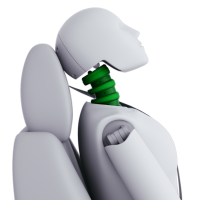 Rear Seat
Rear Seat
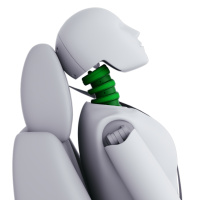 Front Seat
Front Seat
- Good
- Adequate
- Marginal
- Weak
- Poor
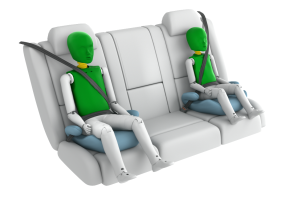
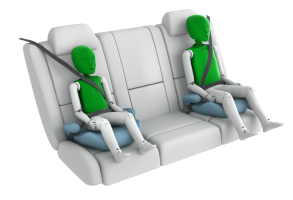
Passenger
outboard
center
Fitted to the vehicle as standard
Not fitted to the test vehicle but available as option
Not Available
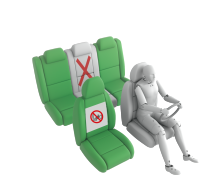
Easy
Difficult
Safety critical
Not allowed
-
Airbag ON
Rearward facing restraint installation not allowed
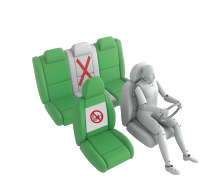
Easy
Difficult
Safety critical
Not allowed
-
Airbag ON
Rearward facing restraint installation not allowed
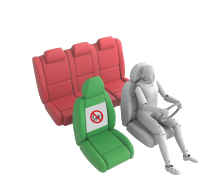
Easy
Difficult
Safety critical
Not allowed
-
Airbag ON
Rearward facing restraint installation not allowed
In both the frontal offset test, protection was good or adequate for all critical body areas for the 6 and 10 year dummies. In the side barrier impact, protection was good and the BOX scored maximum points in this part of the assessment. The front passenger airbag can be disabled to allow a rearward-facing child restraint to be used in that seating position. Clear information is provided to the driver regarding the status of the airbag and the system was rewarded. The Dongfeng BOX is not equipped with 'child presence detection', a system which can alert others if children have been left in the car. The car failed the installation check of a large, rearward-facing child restraint owing to belt length and buckle interference but, otherwise, all restraints for which the car is designed could be properly installed and accommodated.
- Good
- Adequate
- Marginal
- Weak
- Poor
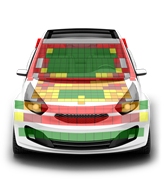
Pedestrian & Cyclist Head 9.1 Pts
Pelvis 1.3 Pts
Femur 1.0 Pts
Knee & Tibia 9.0 Pts
| Type | Auto-Brake with Forward Collision Warning | ||
| Operational From | 8 km/h | ||
| PERFORMANCE | | |||
Protection of the head of a struck pedestrian or cyclist was largely good or marginal, with poor results recorded on the stiff windscreen pillars and at the base and top of the screen. Protection of the pelvis was largely poor, with only very limited points being scored at the edges. Protection of the femur was also largely poor, while that of the knee and tibia was good at all test locations The autonomous emergency braking system of the Dongfeng BOX responds to vulnerable road users such as pedestrians and cyclists, as well as to other vehicles. In tests of its response to pedestrians, the system performed adequately but it does not detect those to the rear of the car. The system performed well in tests of its reaction to cyclists, but offers no protection against ‘dooring’, where a door is opened into the path of a cyclist approaching from behind. The system’s response to motorcyclists was good.
- Good
- Adequate
- Marginal
- Weak
- Poor
| Speed Limit Information Function | Camera & Map, subsigns supported |
| Speed Control Function | Intelligent ACC (accurate to 5km/h) |
| Applies To | Front and rear seats | ||
| Warning | Driver Seat | Front Passenger(s) | Rear Passenger(s) |
| Visual | |||
| Audible | |||
| Occupant Detection | |||
|
|||
| System Name | Driver Monitoring System |
| Type | Direct eye monitoring |
| Operational From | 10 km/h |
| Fatigue | Drowsiness, Microsleep and Sleep |
| Distraction | Long Distraction |
| Type | LKA and ELK |
| Operational From | 60 km/h |
| Performance | |
| Emergency Lane Keeping | |
| Lane Keep Assist | |
| Human Machine Interface | |
| Type | Autonomous emergency braking and forward collision warning | |||
| Operational From | 5 km/h | |||
| Sensor Used | camera | |||
Overall, the performance of the autonomous emergency braking (AEB) system was good in tests of its reaction to other vehicles. A seatbelt reminder system is fitted as standard to the front and rear seats. The car has a direct driver status monitoring system as standard, detecting driver fatigue and some limited types of distraction. The lane support system gently corrects the vehicle’s path if it is drifting out of lane and also intervenes in some more critical situations. The speed assistance system identifies the local speed limit. The driver can choose to allow the limiter to be set automatically by the system.
- Specifications
- Safety Equipment
- Videos
- Rating Validity
Specifications
Tested Model Dongfeng BOX, LHD
Body Type - 5 door hatchback
Year Of Publication 2025
Kerb Weight 1387kg
VIN From Which Rating Applies - all Dongfeng BOX
Class Small Family Car
Safety Equipment
Note: Other equipment may be available on the vehicle but was not considered in the test year.
Fitted to the vehicle as standard
Fitted to the vehicle as part of the safety pack
Not fitted to the test vehicle but available as option or as part of the safety pack
Not available
Not applicable
Videos
Rating Validity
Variants of Model Range
| Body Type | Engine | Model Name/Code | Drivetrain | Rating Applies | |
|---|---|---|---|---|---|
| LHD | RHD | ||||
| 5 door hatchback | electric | Dongfeng BOX * | 4 x 2 |  |
- |
* Tested variant

Find more information in the General Comments section of the assessment
 Share
Share

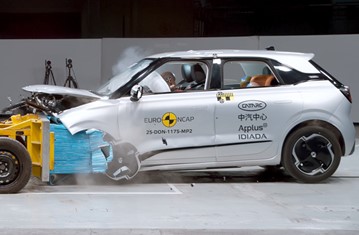
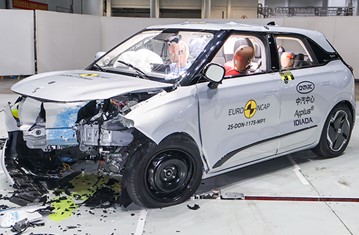
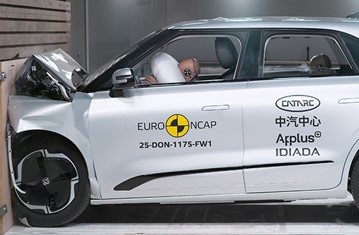
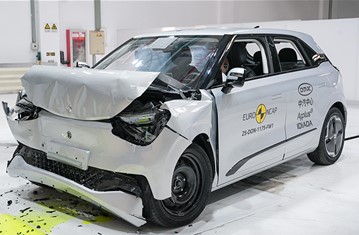
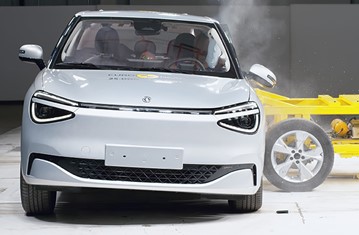
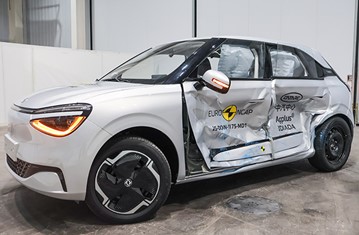
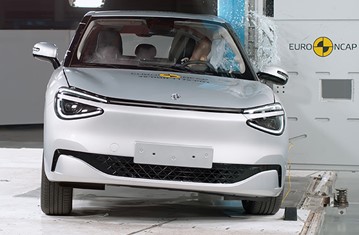
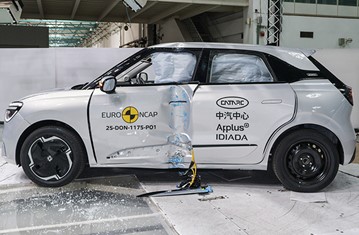


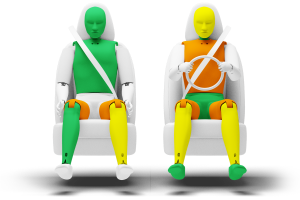
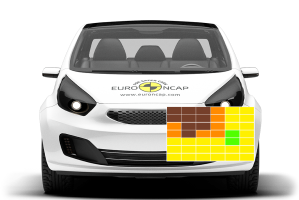
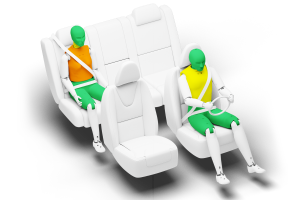
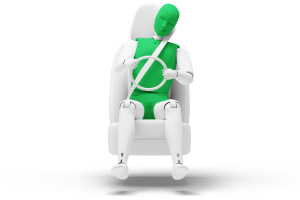
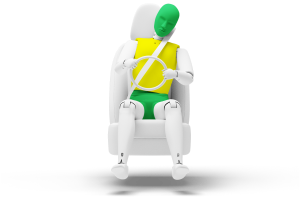
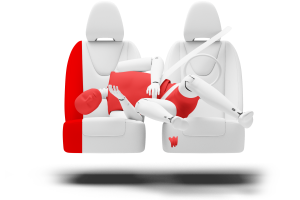
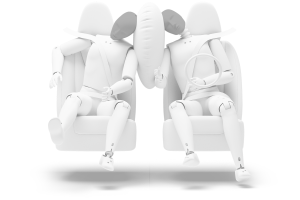

During the vehicle inspection following the frontal offset test, it was seen that multiple spot-welds had failed on the A-pillar, compromising the ability of the bodyshell to withstand further loading. There was also damage evident to the front of the sill and the top of the windscreen pillar to cant rail. The doors remained locked after the test, hindering first responders’ efforts to extricate occupants. There was insufficient pressure in the airbag to prevent the driver’s head from ‘bottoming out’ onto the steering wheel. Structures in the dashboard were considered to present a risk of injury to the legs of some occupants. Analysis of the deceleration of the impact trolley during the test, and analysis of the deformable barrier after the test, revealed that the Dongfeng BOX would be a somewhat aggressive impact partner in a frontal collision. In the full-width rigid barrier test, protection of the rear passenger’s chest was rated as marginal, based on dummy readings of compression, but protection was otherwise good or adequate. In the side barrier test, the Dongfeng BOX provided good protection to all critical body areas and scored maximum points. In the more severe side pole impact, protection was at least adequate for all critical body areas. Dongfeng did not provide evidence to demonstrate the degree to which the BOX would control excursion (the extent to which a body is thrown to the other side of the vehicle when it is hit from the far side). In addition, the car has no countermeasure to mitigate head to head contact between the front seat occupants, so far-side protection was rated as poor. Tests on the front seats and head restraints demonstrated good protection against whiplash injuries in the event of a rear-end collision. A geometric analysis of the rear seats also indicated good whiplash protection. The car has an advanced eCall system which alerts the emergency services in the event of a crash, and a system to prevent secondary impacts after the car has been in a collision. Dongfeng demonstrated that the doors would be openable to allow occupants to escape in the event of vehicle submergence.